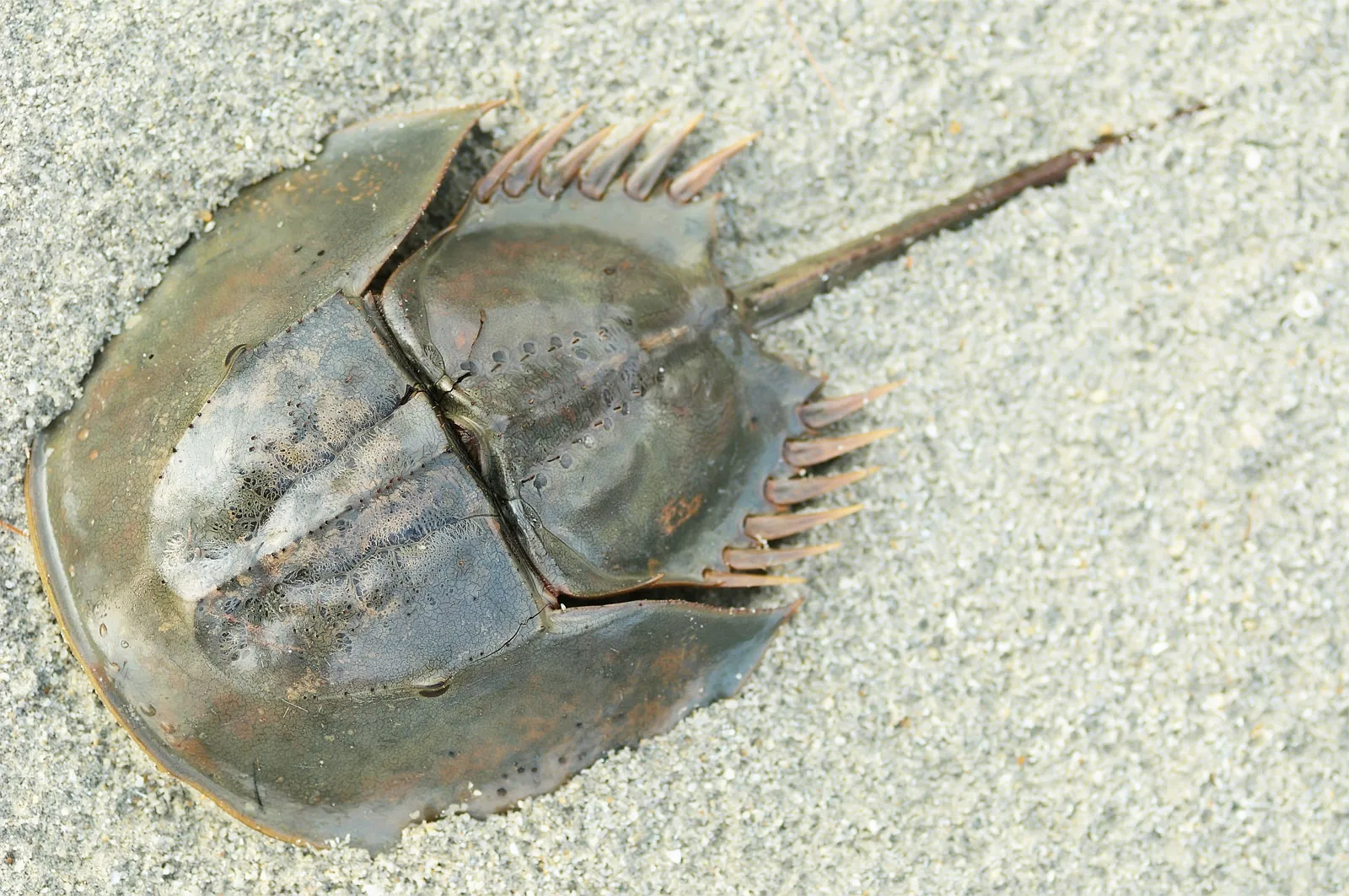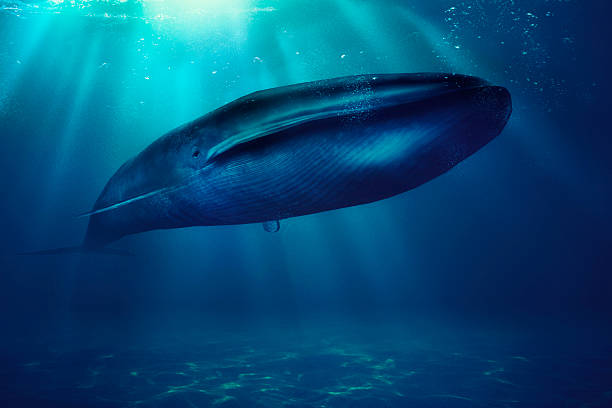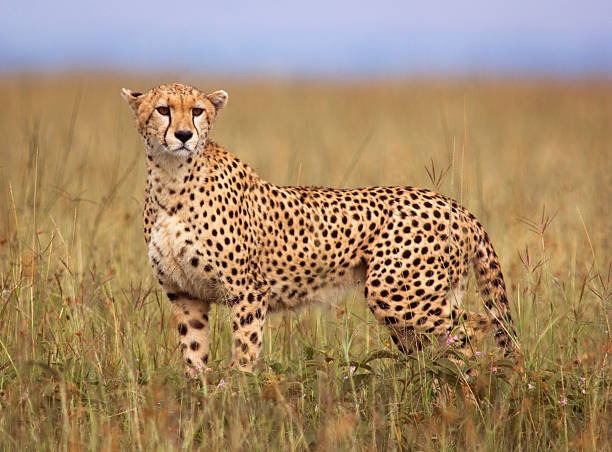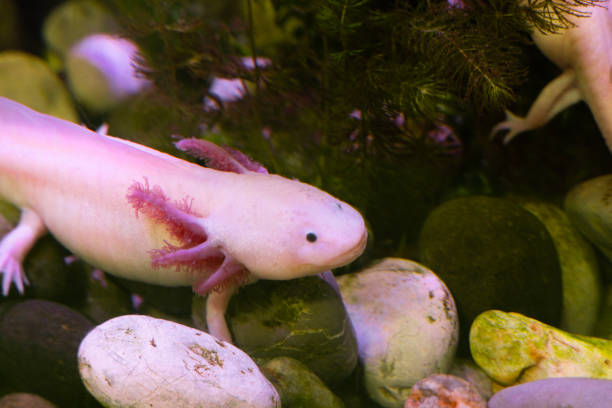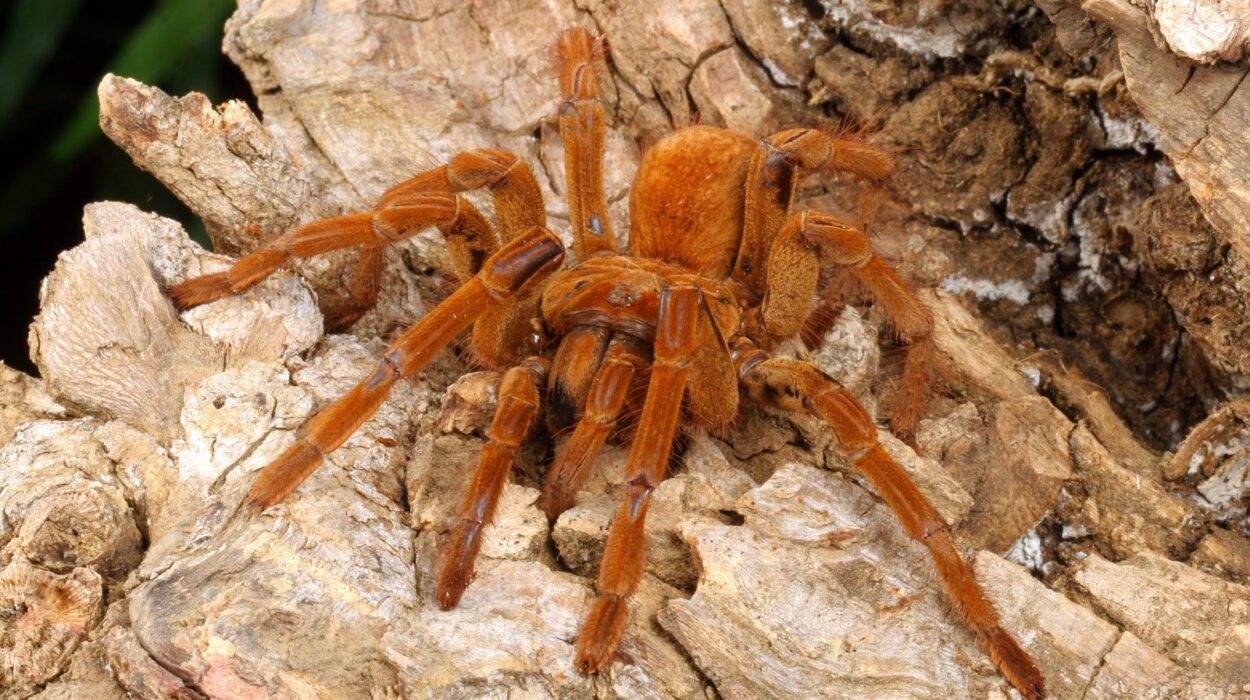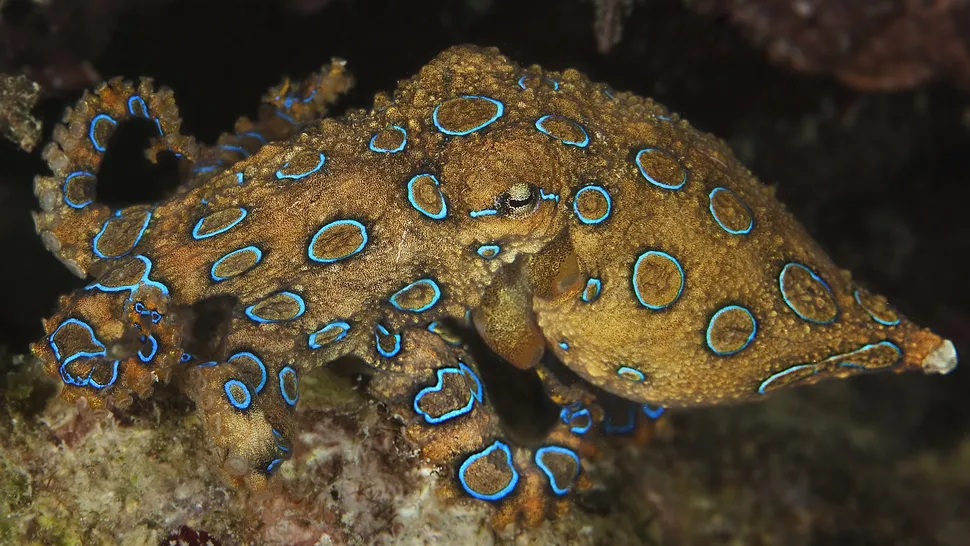For more than four billion years, life on Earth has danced between creation and destruction. Our planet has faced at least five major mass extinctions, each one wiping out most species in a geological blink of an eye. Yet, somehow, life endures. Through fire and ice, through poison skies and boiling seas, a handful of extraordinary creatures have outlasted the apocalypse again and again.
They are the ultimate survivors—animals that have adapted, evolved, and persisted through every catastrophe the planet has thrown at them. Some of them are small and unassuming; others are ancient and majestic. Together, they tell a story of resilience, intelligence, and pure evolutionary genius.
These are 15 animals that survived mass extinctions—the living witnesses to the end of worlds.
1. Horseshoe Crab – The Living Fossil of the Sea
Before the dinosaurs, before the first forests, before even the continents took their familiar shape, horseshoe crabs were already crawling along the ocean floor. For over 450 million years, they have survived ice ages, asteroid impacts, and toxic oceans.
Despite their name, horseshoe crabs are not true crabs; they’re more closely related to spiders and scorpions. Their hard exoskeletons and unique blue blood—rich in copper-based hemocyanin—help them survive in low-oxygen waters.
What truly defines their survival is their stability. While countless other lineages rose and fell, horseshoe crabs stayed consistent, their bodies perfectly designed for survival. Their ancient blood is now vital to modern medicine, used to test for bacterial contamination in vaccines and medical devices.
They are not just survivors of the past—they’re silent partners in our own survival today.
2. Coelacanth – The Fish That Time Forgot
For decades, scientists believed the coelacanth was extinct—a prehistoric fish wiped out 65 million years ago along with the dinosaurs. Then, in 1938, a living specimen was pulled from the depths off the coast of South Africa, shocking the scientific world.
The coelacanth is a relic from the Devonian period, over 360 million years ago, when life was just beginning to move onto land. This deep-sea dweller has lobed fins that resemble the limbs of early amphibians, offering a living link between sea and land animals.
How did it survive? By retreating to the deep ocean, where conditions are stable and few predators exist. It evolved slowly, almost unchanged, while surface life battled extinction after extinction.
Every coelacanth is a reminder that Earth’s story is never truly finished—that even the pages we thought were lost might still be turning in the dark.
3. Crocodiles – The Ancient Predators of the Flood
Crocodiles are living echoes of the Mesozoic Era. When dinosaurs ruled the land, crocodiles ruled the rivers—and they’ve been thriving for over 200 million years.
They survived the Cretaceous-Paleogene extinction event, the same catastrophe that ended the age of dinosaurs. While massive reptiles vanished, crocodiles endured. How? Adaptability. They can live in saltwater or freshwater, survive months without food, and regulate their metabolism to conserve energy.
Their ambush-hunting style, armored skin, and efficient physiology make them near-perfect predators. And because they spend much of their time in water, they were shielded from the worst effects of the asteroid impact and its aftermath.
To this day, when you look into a crocodile’s unblinking eyes, you’re seeing the same gaze that watched dinosaurs walk by millions of years ago.
4. Sharks – Masters of Deep Time
If any creature defines endurance, it’s the shark. These ancient hunters have been swimming in Earth’s oceans for over 400 million years—long before trees, dinosaurs, or mammals.
Sharks have survived all five known mass extinctions. From the Devonian extinction that wiped out 75% of marine species to the asteroid that ended the Cretaceous, sharks endured every apocalypse.
Their secret lies in constant evolution. While some lineages disappeared, others adapted—changing shape, size, and hunting strategy. Their skeletons, made of flexible cartilage, gave them agility and resilience. Their sensory systems—able to detect even faint electrical signals—made them near-perfect predators.
The modern great white, hammerhead, and whale shark are but chapters in a saga that began when life was young. They are the sea’s oldest survivors, still writing their story beneath the waves.
5. Nautilus – The Spiraled Time Traveler
Drifting gracefully through the deep Pacific, the nautilus seems almost otherworldly. With its perfect spiral shell and curious, tentacled face, it looks like a fossil come to life—and that’s exactly what it is.
Nautiluses have existed for over 500 million years, surviving every known mass extinction. They once shared the seas with giant ammonites, which perished during the Cretaceous extinction, but the nautilus endured.
Its survival secret lies in simplicity. Unlike faster, more specialized predators, the nautilus evolved slowly, maintaining a low metabolism and stable lifestyle. It lives in deep water, where environmental changes are less drastic.
Inside that beautiful shell lies a perfect natural design—one that balances buoyancy, protection, and elegance. The nautilus is not a relic—it’s a living reminder of life’s persistence in the face of chaos.
6. Tardigrade – The Indestructible Microbeast
If Earth were to explode tomorrow, the tardigrade would probably still find a way to survive. Known as “water bears,” these microscopic animals are the toughest life forms known to science.
Tardigrades can endure temperatures from near absolute zero to over 300°F, survive in the vacuum of space, and withstand radiation, dehydration, and crushing pressure. When faced with danger, they curl up into a cryptobiotic state, shutting down their metabolism completely.
They’ve been on Earth for about 500 million years, surviving every major extinction by simply outlasting disaster itself.
The tardigrade doesn’t fight the apocalypse—it sleeps through it. And when the storm passes, it wakes, dusts off the cosmos, and continues its quiet journey through eternity.
7. Jellyfish – The Eternal Drifters
Jellyfish are older than the dinosaurs—older even than most fish. They’ve floated through Earth’s oceans for over 600 million years, surviving mass extinctions that reshaped life again and again.
Their survival strategy is elegant simplicity. With no bones, brains, or complex organs, jellyfish are nearly immortal in design. They can adapt to changing ocean temperatures, feed on almost anything, and reproduce both sexually and asexually.
Some species, like Turritopsis dohrnii, are biologically immortal, capable of reverting to a younger stage after reaching maturity.
When Earth’s climate swung from freezing to boiling, when seas turned acidic and skies went dark, jellyfish simply drifted on—eternal ghosts of the deep.
8. Sea Turtle – The Ocean’s Ancient Traveler
Graceful and enduring, sea turtles have cruised the oceans for over 110 million years. They saw the rise and fall of dinosaurs and outlived the meteor that ended them.
Their survival comes from adaptability. Sea turtles can live in nearly every ocean and feed on a wide range of foods—from jellyfish to seaweed. Their streamlined bodies allow them to travel thousands of miles, migrating across entire oceans to nest.
Even through mass extinction and modern threats like pollution and climate change, they persist. Sea turtles are symbols of endurance, gliding silently through waters that have seen worlds rise and fall.
They remind us that life’s oldest stories are still being written beneath the waves.
9. Lungfish – The Amphibious Ancestor
The lungfish is a living bridge between water and land. With both gills and a primitive lung, it can survive in oxygen-poor water—or even out of water entirely, by breathing air.
Lungfish have existed for over 400 million years, enduring multiple mass extinctions. When drought strikes, they burrow into the mud and enter a dormant state, surviving for months without water.
This unique adaptation may be what allowed their ancient ancestors to crawl onto land, giving rise to amphibians and eventually to us.
In their quiet pools, lungfish still embody that first great evolutionary leap—the courage to step onto an uncertain shore and begin a new chapter for life on Earth.
10. Cockroach – The Survivor of Every Apocalypse
Despised by many, but admired by scientists, the cockroach is one of Earth’s most successful survivors. These resilient insects have been around for at least 300 million years, enduring everything from volcanic winters to asteroid impacts.
Their survival comes from sheer adaptability. They can live without food for weeks, survive high radiation, and squeeze into nearly any habitat. Their fast reproduction ensures that even if disaster strikes, some always endure.
Fossil evidence shows that cockroaches have changed very little since the Carboniferous period. They were crawling through prehistoric forests long before humans even existed.
In every age, they remind us that survival often favors the adaptable, not the strong.
11. Horseshoe Bat – The Winged Survivor
While many mammals perished in ancient extinctions, the ancestors of modern bats survived—and thrived. Horseshoe bats, with their distinctive nose structures and remarkable echolocation abilities, trace their lineage back nearly 60 million years.
When the asteroid struck 66 million years ago, bats’ small size and nocturnal habits likely saved them. They could hide, hibernate, and feed on insects that survived underground.
Their ability to navigate and hunt using sound rather than sight gave them a huge evolutionary advantage in darkened, post-apocalyptic skies.
Today, horseshoe bats still represent adaptability at its finest—thriving in forests, caves, and cities alike. They are the living echoes of the night after the dinosaurs fell silent.
12. Ostracods – The Tiny Keepers of Deep Time
Barely visible to the naked eye, ostracods are tiny crustaceans encased in protective shells. They’ve been living in oceans and freshwater for over 500 million years—surviving every known extinction event.
Their strength lies in simplicity and resilience. They can adapt to changing temperatures, salinity levels, and habitats. Some even glow in the dark, using bioluminescence to communicate or evade predators.
Fossilized ostracods provide some of the most detailed records of ancient ecosystems, capturing entire worlds in miniature.
They’ve outlived empires, continents, and species, continuing to drift through the ages, unseen but eternal.
13. Alligator Gar – The River’s Ancient Predator
With its armor-plated body and sharp-toothed snout, the alligator gar looks like something from the age of dinosaurs—and in a way, it is. These massive freshwater fish have existed for over 100 million years, surviving ice ages and extinctions alike.
Their tough scales and ability to breathe both air and water allow them to survive in oxygen-deprived environments where other fish perish. They can live for decades, even in polluted waters.
While many prehistoric fish went extinct, the alligator gar adapted to rivers and swamps, finding safety in diversity. Today, it remains one of North America’s most ancient and awe-inspiring creatures—a survivor of the Mesozoic world.
14. Lamprey – The Primal Parasite
Lampreys are among the oldest living vertebrates, with fossils dating back 360 million years. They survived every mass extinction, from the Permian catastrophe to the asteroid impact.
With eel-like bodies and suction-cup mouths lined with teeth, lampreys latch onto other fish to feed on their blood. It’s not pretty—but it’s effective.
Their simplicity has been their secret. They haven’t needed to change much because their design works perfectly. Lampreys can survive in both saltwater and freshwater and reproduce prolifically.
They are relics of an ancient era when vertebrates were just beginning to evolve—and they’re still here, thriving in rivers across the world.
15. Sea Sponge – The First Architects of Life
Long before dinosaurs, before fish, before even jellyfish, there were sponges. These simple, filter-feeding organisms are among the oldest animal lineages on Earth, dating back at least 700 million years.
Sponges survived every catastrophe the planet has endured, from global ice ages to asteroid impacts. Their structure is astonishingly efficient—porous bodies that filter nutrients directly from the water, allowing them to thrive even in nutrient-poor environments.
Their simplicity makes them nearly indestructible. When torn apart, some sponge species can even reassemble themselves from individual cells—a kind of biological immortality.
They are the quiet architects of the ocean, filtering water, providing habitat, and serving as living fossils of life’s earliest forms.
Lessons from the Survivors
What unites all these creatures—giant and microscopic, ancient and modern—is adaptability. They did not survive by resisting change, but by embracing it. They found balance in simplicity, strength in flexibility, and endurance in patience.
Mass extinctions are brutal reminders that Earth itself is alive, ever-changing, and sometimes unforgiving. Yet, through every era of darkness, life finds a way. The same resilience that carried the horseshoe crab through 450 million years still beats within every living thing today—including us.
To study these survivors is to glimpse the heart of evolution itself: the relentless will to continue, to endure, and to transform.
These animals are more than fossils come alive—they are living testaments to the story of survival, written not in words, but in the pulse of existence that has never once gone silent.
